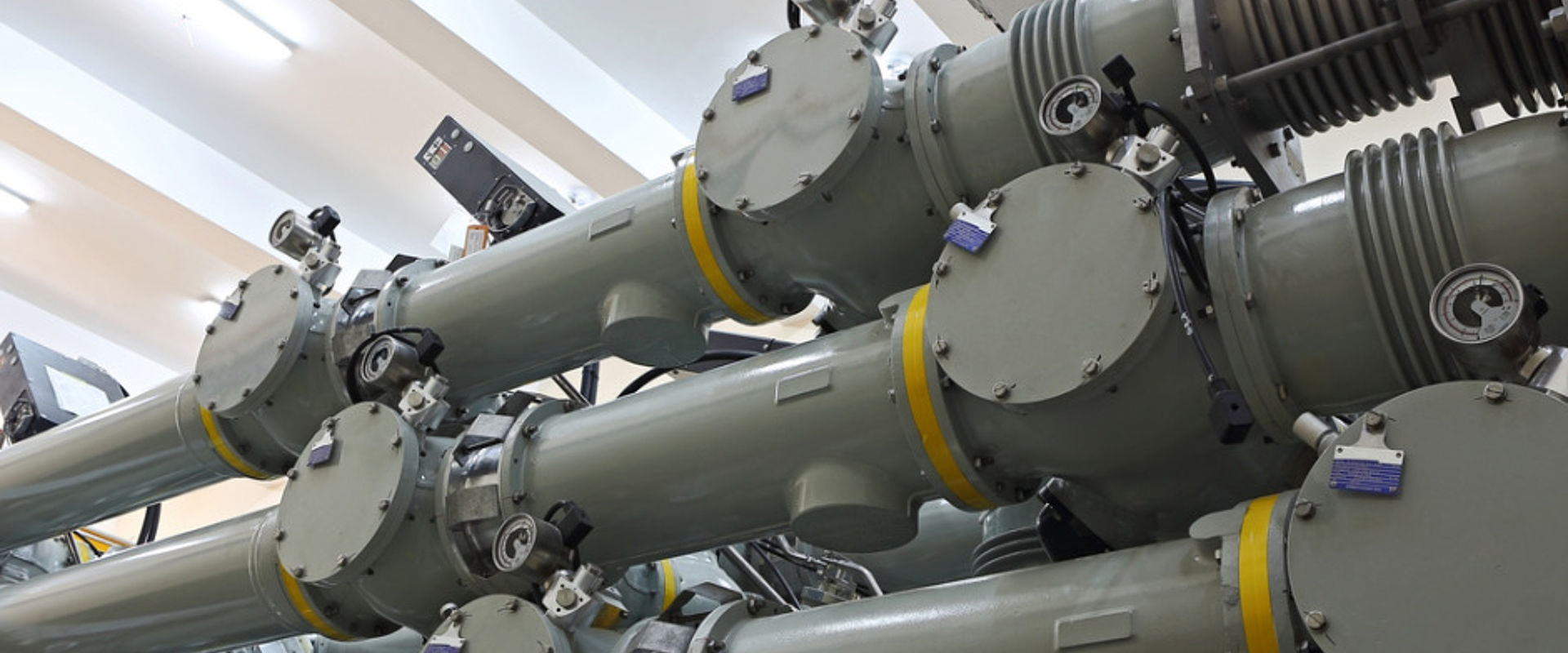
Protecting the power network from electrical faults
Challenge
Electricity is transmitted at high voltages (HV) and reduced for domestic use by power transformers installed in HV substations. Many substations are located inside buildings in urban areas in reduced spaces. HV switchgear, such as circuit-breakers and disconnectors, are used to de-energise equipment to allow safe maintenance. These are often encased in Sulfur hexafluoride (SF6) gas at several hundred kPa which acts as an electrical insulator allowing the gear to be operated safely in confined spaces. Switching, or the redirection of electricity, within these Gas Insulated Substations (GIS) causes ‘Very Fast Transients’ (VFT) with nano-second duration and rise times which can stress the insulation of these substations and also in adjacent equipment such as high voltage cables and power transformers. VFTs are also a limiting constraint for the introduction of more efficient Ultra-High Voltage GIS. When current maintenance policies include periodic verification of grid insulation condition, it takes a lot of human effort and expertise. These policies also include measurements for ‘Partial Discharge’ (PD) events where electricity can spark due to incipient insulation failures.
The International standard IEC 61869-1 specified the VFT test conditions for measuring transformers installed in GIS systems but there was a lack of traceability for wideband sensors, such as D-dot probes, that measure HV transients. If unaddressed this could lead to blackouts, disrupting electricity supplies.
Solution
In the EMPIR project UHV two setups for VFT and PD detection were developed; a PD reference calibrator for discharges under AC and DC stress and a GIS testing set-up for traceable calibration of sensors, such as D-dots, used for measuring VFT Over-voltages (VFTO).
The reference calibrator included a new method for evaluation and qualification of commercial PD measuring systems for HVAC and HVDC insulation diagnosis and can generate four types of pulses representative of different PD defects such as corona, surface, cavity or floating potential.
Furthermore, this system can superimpose different electrical noises of variable amplitude. These different signals can be mixed to simulate actual operating conditions in a HV installation.
The developed GIS testing set-up simulates an actual substation and includes four D-dot sensors, a reference high voltage divider and a wideband transient recorder that was developed in the project. This set-up is capable of traceably measuring VFTO at a rise time of 6 ns lasting several tens of nanoseconds. The testing set-up can also be used in conjunction with probes representing different PD defects to evaluate automatic diagnosis insulation tools that use commercial PD measuring instruments.
Impact
Elewit, the technology platform of the Red Electrica Group and Red Eléctrica de España (REE), the sole Transmission System Operator (TSO) of Spain’s electricity grid, are developing an R&D Project with the final goal of getting an artificial intelligence platform for insulation diagnostics.
Within this context REE used the PD reference calibrator for its ability to generate different PD defects to see if the systems software could correctly identify them. This was performed as part of a minimum viable product (MVP) assessment to evaluate if the system operated as desired and allowing the company to avoid lengthy and unnecessary work in the development of the platform.
As part of the MVP the GIS system was used in conjunction with small PD test cells – that output PD types – to assess if the AI software could correctly identify and locate different PD faults. Once completed, the system will be able to diagnose PD occurring in the grid in an automatic way, providing distance information, signals and alarms to prevent faults in GIS systems, cables and power transformers.
This will allow an earlier and more accurate detection of defects, reducing both the cost and time required to correct them.
- Category
- EMPIR,
- Standardisation,
- EMN Smart Electricity Grids,
